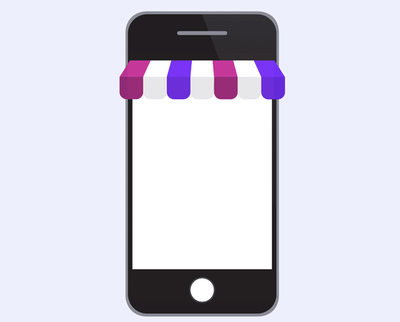5 Steps to Deliver the Ultimate Digital Shopping Experience
Use these five proven tips to create an outstanding digital shopping experience for your ecommerce customers.
.jpg)
Retailers are increasingly aware of the pressing need to focus on the digital shopping experience. After all, digital commerce is expected to grow by an average of 8.9% year on year between now and 2024. COVID-19 has also had a significant impact on e-commerce. According to TechCrunch, the pandemic has accelerated the shift from brick-and-mortar to online sales by five years.
While retailers are already investing sizeable amounts in their digital shopping experiences, it remains a challenge to attract, engage, and convert website visitors into paying customers. However, companies can implement tested initiatives to improve their digital experience. Here are five essentials.
1. Tap the Power of an Omnichannel Experience
The days of using single communication channels in isolation are numbered. Rather, customers increasingly expect an omnichannel experience. This doesn't mean that a retailer has to integrate every single possible communication channel into an overall strategy. That would be exhausting, if not impossible. What it does mean is consistency and integration across the range of channels they do use.
This might typically include social media, email, websites, online advertising, brick-and-mortar stores, apps, and direct communication through channels like contact centres and chatbots. What makes omnichannel so powerful is that all channels are integrated, meaning that updates executed on one channel are updated on others. Brands can also use different channels to complement and support each other, opening up a world of customer experience possibilities.
2. Use Brick-and-Mortar Stores to Enhance the Digital Experience
There has been much talk about the death of the high street store in the last few years. But just like predictions that physical bookstores would close when e-readers were first released, it's unlikely that brick-and-mortar stores will go the way of the dodo either. What's likely, however, is that they'll evolve into something different. In fact, we're already seeing this in the financial and tech sectors. With fintech advances making most personal finance needs easy and quick to perform virtually, physical bank branches are rapidly turning into hubs to attract and engage leads and customers.
Similarly, many leading tech developers now use brick-and-mortar stores as experiential hubs, where customers can try out their products in person before purchasing. Rather than have the brick-and-mortar experience compete with its digital counterpart, savvy retailers understand that both options can work together, with the former acting as a powerful top-of-the-funnel driver to help power the latter.
 SOLVE THE BIGGEST CX CHALLENGES
SOLVE THE BIGGEST CX CHALLENGES
3. Focus on the Mobile Experience
Mobile commerce is predicted to keep rising as more people use their phones to shop. This trend makes sense, considering the extraordinary speed with which smartphones are advancing technologically. In fact, 65% of digital retail traffic comes from people browsing on their phones, but sales via mobile still lag behind desktop, according to The Drum. This suggests that digital retailers still have work to do to make the mobile experience as appealing as the experience on other devices.
To make the mobile digital shopping experience more attractive to customers, retailers can focus on enhancing intuitiveness, simplifying the overall customer journey at every touch point, and decreasing the time it takes to complete a transaction, from the start of browsing through to payment.
4. Eliminate Reasons to Abandon Cart
According to an average score calculated from 41 individual reports, just under 70% of all digital shopping carts are abandoned. While customers abandon their carts for perfectly good reasons, including wanting to get an idea of cost or simple curiosity, many do it because of issues during the customer journey. These issues can include:
Slow website load times
Too many or too few options (for instance, from drop-down menus)
A need to register with the retailer's website
Website not optimised for mobile
Website errors and/or crashes
Retailers can improve their cart abandonment rates by ensuring that their website uptime, speed, and overall functional reliability are stellar and that the customer experience is as smooth, enjoyable, and efficient as possible. When focusing on cart abandonment, it's essential to implement measures across the desktop, tablet, and mobile device customer journeys.
5. Make the Checkout Process a Breeze
Along with cart abandonment, digital retailers have to contend with checkout abandonment. And yes, they're two different (albeit related) areas. Checkout abandonment refers to when customers elect not to proceed with the transaction when they're at the final step, payment. Customers may forgo checking out for a few reasons, including:
- A lack of trust in the retailer regarding the customer's data
Too many sections to complete
Lack of clarity over the final price and how it has been reached
Additional fees, including a processing fee, delivery fee, and taxes
A lack of an on-brand page design that adds to the overall shopping experience
Digital retailers can improve their checkout abandonment rates by reducing the number of mandatory fields to as few as necessary to complete the transaction and including an autofill option. They can also offer a range of payment options, including PayPal; make the fee breakdown clear and easy to understand; and optimise the process for mobile.
Delivering the Ultimate Digital Shopping Experience
By implementing these five tried-and-tested points of action, retailers can take their digital shopping experience for customers to a whole new level. These tips can combine to form a robust strategy to drive down online abandonment rates and improve conversion across all devices. As customers increasingly migrate to shopping online, it will be the retailers who invest wisely in their entire digital customer journey who will likely be best positioned to thrive.